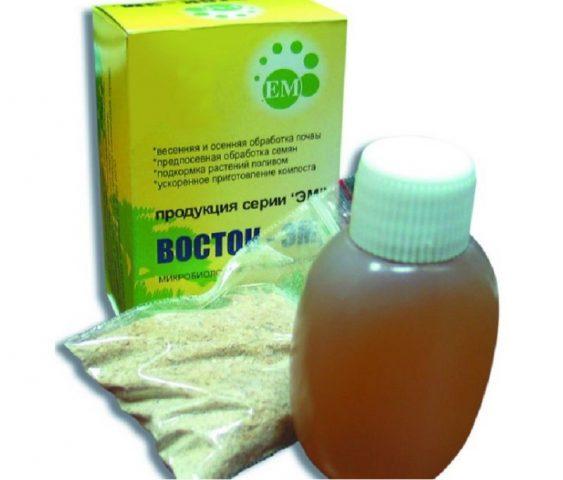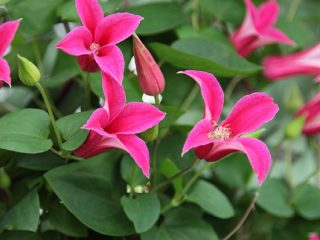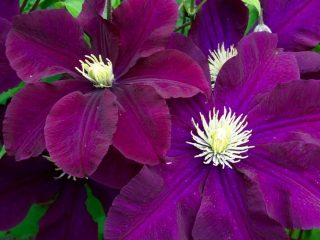Content
Rose bushes are a real decoration of any garden. But for the plant to bloom magnificently and please the eye, it needs proper care and a sufficient amount of nutrients. There are many different fertilizers for feeding, but few know that you can feed roses with yeast.

Yeast contains most of the microelements that a rose bush needs
Is it possible to feed roses with yeast?
Yeast is a valuable source of many beneficial elements, which is why it is successfully used in gardening. During flowering, a rose spends a large amount of energy that needs to be restored. You can compensate for energy costs using a yeast solution.
Due to the positive effect on the root system, gardeners even advise rooting young roses by yeast.
What are the benefits of feeding roses with yeast?
The composition of regular baker's yeast is extensive. They contain elements such as:
- phosphorus;
- potassium;
- calcium;
- magnesium;
- iron;
- copper;
- zinc;
- nitrogen.
All these substances allow the rose bush to develop properly, acting as follows:
- stimulate the growth of shoots and green mass;
- strengthen the immune system and help the plant adapt to any unfavorable conditions;
- maintain water-salt balance.
In spring, yeast feeding can be an excellent stimulant for awakening roses from winter hibernation. During budding, adding this component to the soil increases the chances of abundant and long-lasting flowering. And when planting, fertilizing with yeast has a positive effect on the rooting of young roses.
Deadlines for depositing
Yeast acts more as a growth stimulator for plants, but it cannot fully replace mineral fertilizers and organic matter. Therefore, they are used as an additive and applied twice during the growing season - in the spring and during the budding period.
In winter, after waking up, roses are fed with a yeast solution to stimulate growth. And at the moment of bud formation, such an additive allows you to compensate for the lack of microelements. But if rose bushes are fertilized during cultivation only with mineral compounds, then yeast is not used, since there will be no effect from their use. It is not recommended to carry out such fertilizing in conditions of insufficient light (in cloudy and rainy weather).
Recipes for yeast fertilizers for roses
Yeast supplements can be used in various forms. And they are not difficult to prepare. In this case, you can use the baking product either fresh, raw or dry. The main thing is to keep the proportions correctly.
With fresh yeast
The simplest fertilizing recipe is to use fresh yeast as a base. The raw baking product can be purchased in briquettes of 100 g. They are used as a solution, for this a special composition is prepared from:
- 100 g raw fresh yeast;
- 1 liter of warm water;
- 1/3 teaspoon sugar.
Cooking method:
- The yeast is transferred to a deep container and kneaded.
- Add sugar and water, mix thoroughly until completely dissolved.
- Leave in a warm place until fermentation begins.
- Before use, pour the solution into a bucket and add more warm water until full.
- The prepared fertilizer is applied directly to the root of the rose bush (it is enough to use about 1 liter of solution per plant).

Sugar can be replaced with honey or jam
Using dry yeast
With dry yeast, rose food is prepared almost identically to the first recipe, the only thing is that the ratio of ingredients has some differences:
- 10 g dry yeast;
- 10 liters of warm water;
- 2 tbsp. l. Sahara.
The process itself consists of the following steps:
- First mix yeast and sugar in a bucket.
- Then pour 10 liters of warm water and mix thoroughly.
- The finished solution is allowed to brew a little to activate the fermentation process, then the rose is watered.
Apply the composition exclusively to the root of the bush.
Herbal infusion with yeast
The effectiveness of fertilizing can be increased significantly by adding additional components. Gardeners note that one of the current recipes is a variant of herbal infusion with yeast.
It is prepared from the following ingredients:
- grass - you can use weeds from the garden, but nettle, mint, dandelion are best suited;
- a bottle of Humate concentrate, it can be replaced with a Fitosporin plate;
- fresh raw yeast – 200 g;
- warm water – 10 l.
Prepare fertilizing according to the following scheme:
- Weeds are poured into a barrel, transferred to the sun and allowed to stand for up to 2-3 weeks.
- Then the rotted grass is removed, leaving the liquid into which Humate or Fitosporin is added and mixed.
- Yeast is added to the resulting composition, kneaded well and left for ten minutes;
- Finally, add 10 liters of water to the barrel, mix thoroughly and water the roses.
How to feed roses with yeast and sugar
Yeast is most productive when combined with sugar. Therefore, the use of a sweet product is necessary to activate fermentation. As a fertilizer, a combination of components such as:
- dry yeast;
- sugar – 2 tbsp. l.;
- warm water – 5 l.
Procedure for preparing the composition:
- Yeast is placed in a bucket.
- Add sugar and mix everything thoroughly.
- Pour warm water (1 liter) into a container and set aside for fermentation.
- The finished mixture is diluted with the rest of the water and the rose bushes are watered with the resulting solution at a rate of 1 liter per plant.
With yeast and ash
Ash itself is an effective additive for roses, and in combination with yeast, this fertilizer will become even more useful for flower bushes. The advantage of this combination is that it contains double the amount of calcium and potassium. After all, these elements are regularly washed out of the soil.
There is no need to add ash to the solution, because you can simply sprinkle it around the tree trunk and then pour it with the nutrient mixture.

Ash is sprinkled around the rose bush on pre-moistened soil.
Methods of application
Yeast fertilizers for roses must be applied correctly. There are certain features of this operation:
- ready-made solutions containing organic components must be used immediately after preparation and cannot be stored for a long time;
- When watering bushes with fertilizers, do not get them on the leaves;
- When watering flower bushes with this fertilizer, it is very important to maintain clear proportions - there should not be too much fertilizer, but even a smaller amount will be ineffective;
- You should not often use yeast solutions to fertilize roses, because otherwise an excess of substances may occur, which will lead to the withering of the garden plant;
- When preparing solutions with yeast for feeding roses, it is necessary to use warm water, preferably at room temperature, since the product will not be activated in cold water, and will become completely unusable in hot water;
- It is necessary to apply fertilizing at the root of flower bushes.
If you follow the rules of yeast feeding, they will have a positive effect on the growth, development and flowering of rose bushes.
Preparations containing yeast
If you do not have experience in independently preparing nutritional compositions for feeding roses, then you can use an excellent alternative - use ready-made preparations that contain yeast.
For these purposes, you can resort to such well-known means as:
- “Shine” is a drug produced in several variations. It contains beneficial fungi and bacteria, including yeast.
The dose rate of the drug depends on the method of processing
- “Baikal EM-1” is a product that, in addition to yeast fungi, contains lactic acid, photosynthetic, nitrogen-fixing microflora, which makes it possible to minimize its effect on plants.
- "Economic Bioconstructor" is a drug intended to increase soil fertility. It has a comprehensive effect on roses, strengthens their immunity and replenishes them with the necessary microelements.
The drug can be used for foliar and root feeding
- “Vostok EM – 1” is a concentrated liquid for the improvement of open ground. The drug improves the composition of the soil and makes it fertile for growing flower crops.
The drug improves the overall condition of the soil
Conclusion
You can feed roses with yeast to increase their immunity and stimulate growth. Such fertilizers are usually used in the spring and before flowering, allowing the plant to be saturated with sufficient energy. But still, yeast solutions are more of an additional component, because abundant flowering greatly depletes the soil, and its composition can only be restored by using mineral and organic nutrient complexes.
Reviews on the use of yeast to fertilize roses












